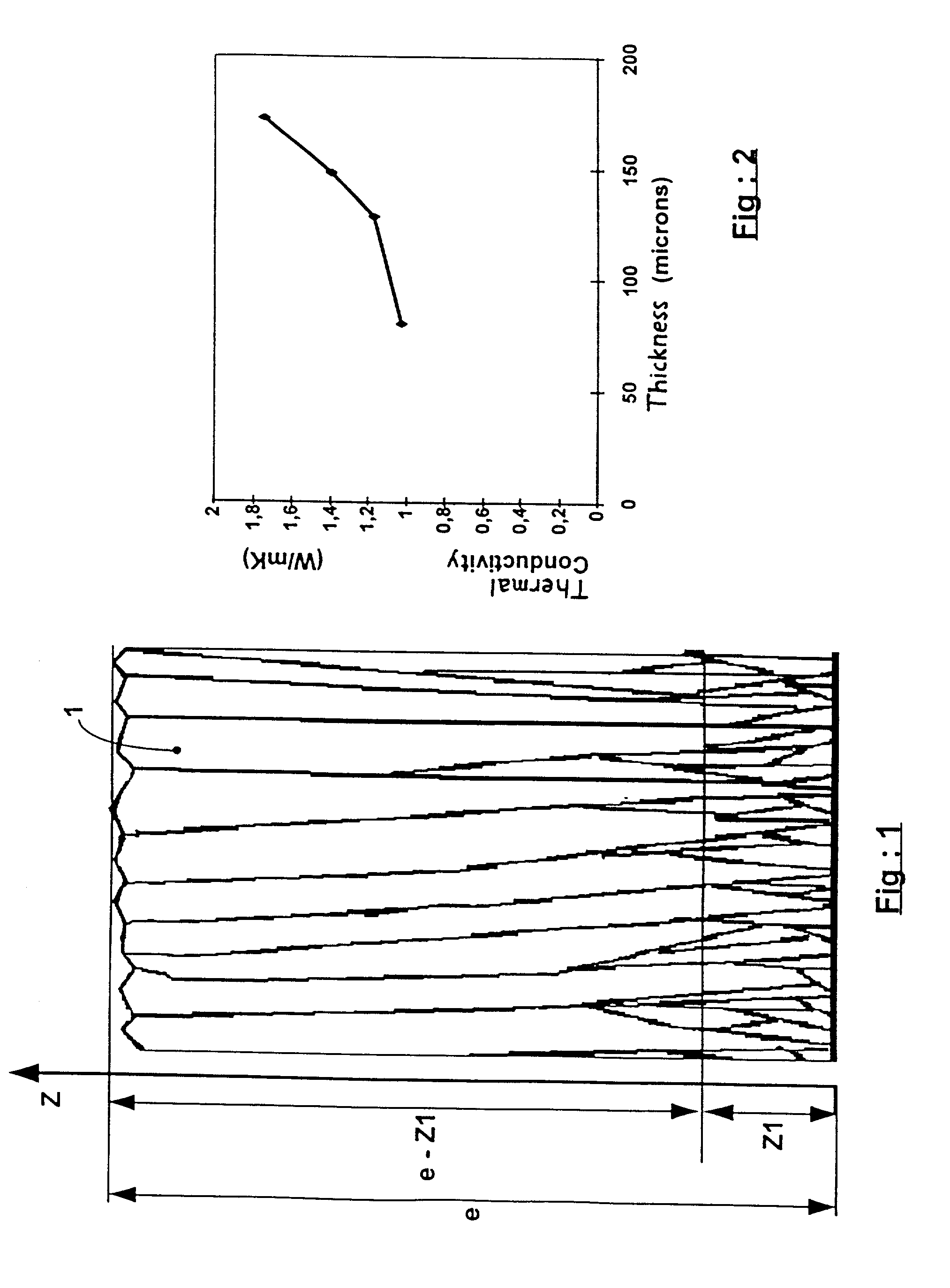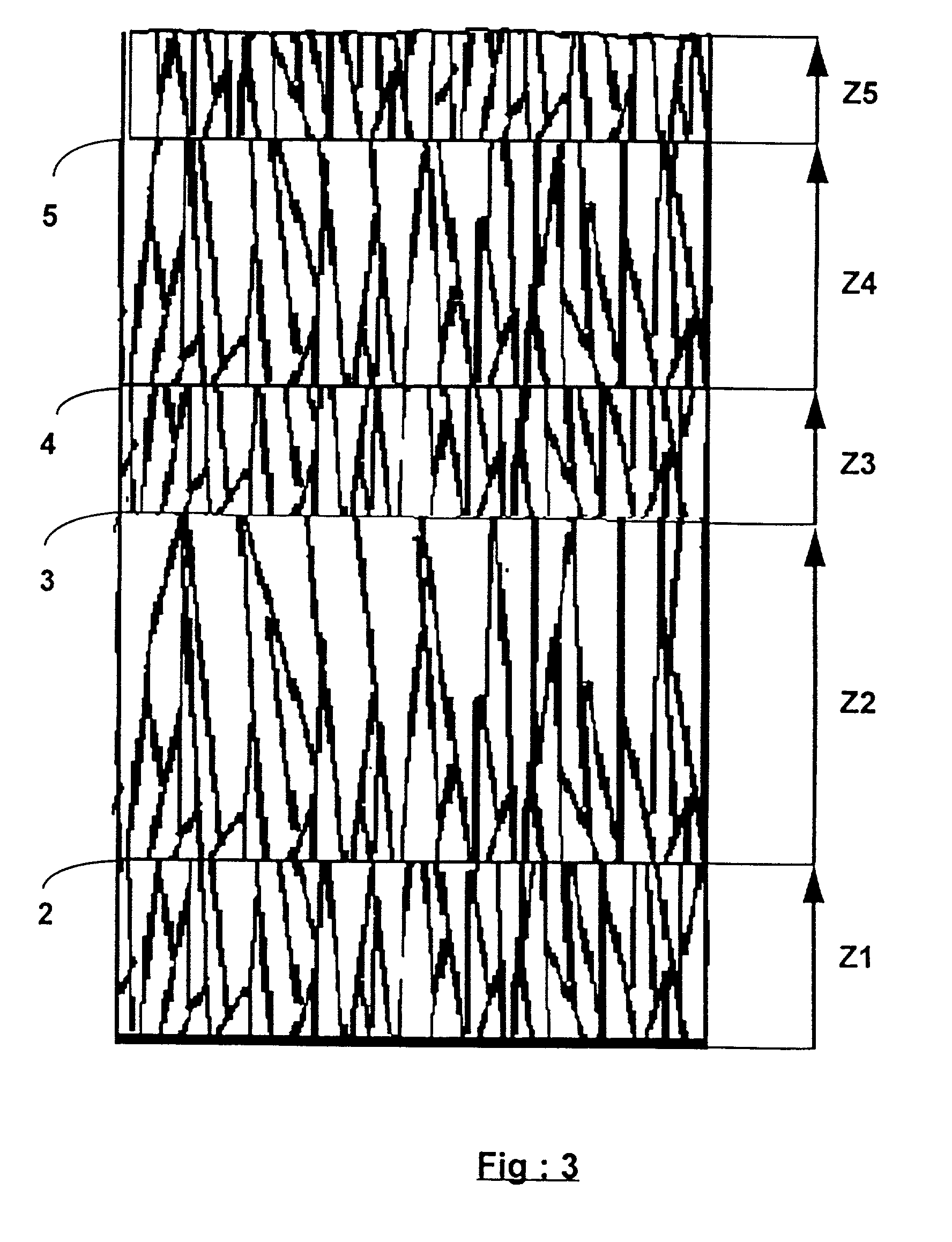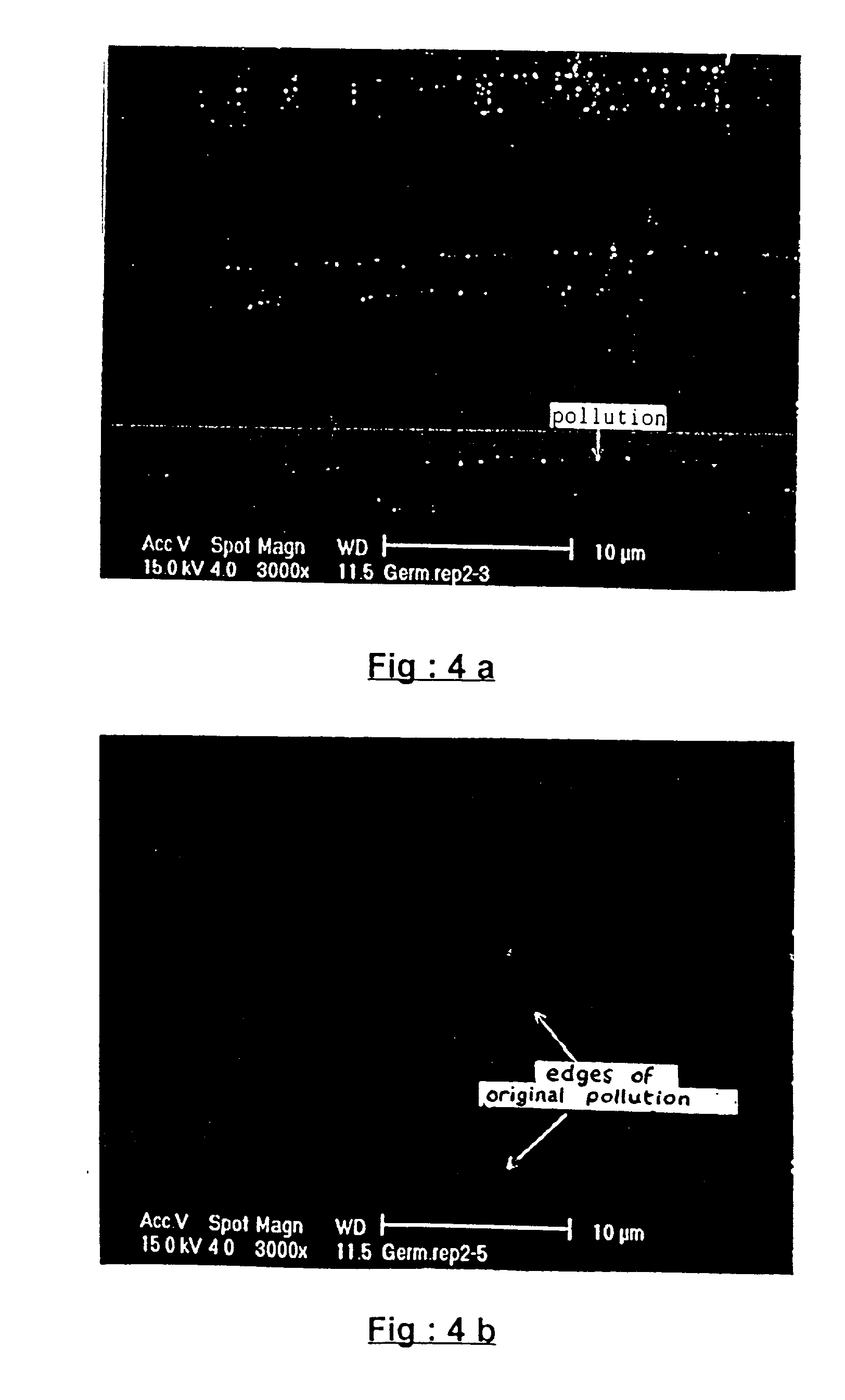Ceramic heat barrier coating having low thermal conductivity, and process for the deposition of said coating
a heat barrier coating and ceramic technology, applied in the direction of chemical vapor deposition coating, machine/engine, natural mineral layered products, etc., can solve the problems of differential expansion of metal and ceramic, limited approach, and inability of turbine components such as diffusers to withstand high temperatures, so as to prevent heat conduction through the deposit and reduce the difficulty of application
- Summary
- Abstract
- Description
- Claims
- Application Information
AI Technical Summary
Benefits of technology
Problems solved by technology
Method used
Image
Examples
Embodiment Construction
[0031] The invention is based on a finding that a vapour phase deposited ceramic coating has a morphology 1 which changes over its thickness such as shown in FIG. 1. This morphology gradient is marked in particular by a density of mircocolumns 1 which decreases as a function of deposit thickness. The microcolumns are very fine at the interface with the substrate and can be likened to fibres, but tend to flare out in the outer region of the ceramic layer. One of the consequences of the change in the morphology of the ceramic coating with its thickness is that the thermal conductivity of the coating increases with its thickness (see FIG. 2). The outer region of the ceramic coating has a thermal conductivity which is higher than the coating region adjacent the substrate. This effect has been noticed in the case of materials which are very good heat conductors, such as diamond deposited by CVD, and in the case of poorer conductors such as yttriated zirconia. The morphology of a vapour p...
PUM
| Property | Measurement | Unit |
|---|---|---|
| diameter | aaaaa | aaaaa |
| thickness | aaaaa | aaaaa |
| thickness | aaaaa | aaaaa |
Abstract
Description
Claims
Application Information
 Login to View More
Login to View More - R&D
- Intellectual Property
- Life Sciences
- Materials
- Tech Scout
- Unparalleled Data Quality
- Higher Quality Content
- 60% Fewer Hallucinations
Browse by: Latest US Patents, China's latest patents, Technical Efficacy Thesaurus, Application Domain, Technology Topic, Popular Technical Reports.
© 2025 PatSnap. All rights reserved.Legal|Privacy policy|Modern Slavery Act Transparency Statement|Sitemap|About US| Contact US: help@patsnap.com



